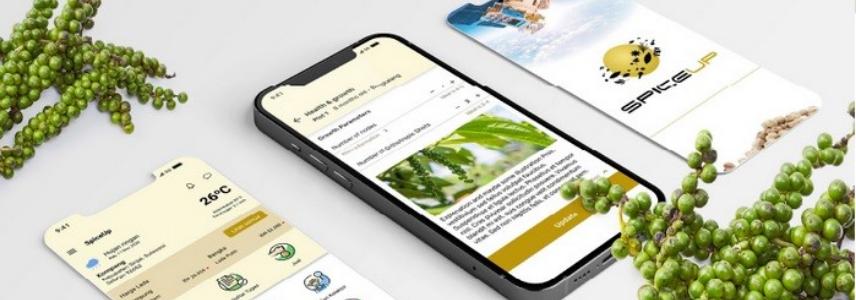Digital apps and blockchain help small spice producers

Digitalisation in the spices and herbs sector has the potential to make the supply chain more sustainable. Farmers can benefit from smartphone applications and precision agriculture. Processors can increase quality and produce safer products by using big data. And exporters, buyers and final consumers can use blockchain technology to make the entire chain more transparent.
Recently, Dutch company Verstegen launched 2 digital projects. Let us look at these best practice examples of how digital technologies can help businesses become more sustainable.
Supporting small pepper farmers with smartphone applications
A recent project that focuses on digital agriculture is SpiceUp. This project launched in April 2021. It combines advanced satellite technology, the internet, and information technology to support black pepper producers in Indonesia. The Netherlands Space Office funds this project, and it includes several partners. The lead organisation of the SpiceUp consortium is Verstegen, one of the largest Dutch spice processors and traders.
The SpiceUp project uses the Internet of Things (IoT) and Big Data to help pepper farmers in Indonesia add value-added activities to their pepper farm management. The SpiceUp app was developed for Indonesian farmers to:
- Improve good agricultural practices;
- Control pests and diseases;
- Analyse the weather;
- Give regular updates about pepper prices; and
- Connect farmers and businesses to the marketplace.
For example, farmers get customised advice about water management, fertilisers, and agricultural techniques through the app. Farmers also receive alerts on specific pests and diseases based on weather forecasting.
With the app, spice collectors can use farmer QR codes to collect specific farm data such as farm size, pepper variety and yield. Via the geodata intelligence platform, SpiceUp provides pepper buyers with information about soil and weather suitability specific to the pepper’s characteristics and requirements. It also includes information on good agricultural practices and traceability of the pepper in the particular buyer’s network. Farmers can also access the market price and use it as input for transactions. The farm data adds value for pepper buyers and justifies a premium payment for the product.
Using blockchain technology to trace nutmeg
Another best practice example from Verstegen uses blockchain technology. The company uses this technology for a fair, transparent and sustainable value chain from farmer to consumer. By scanning the QR code on nutmeg packaging, you can learn about its origins in Indonesia and see which farmer grew it. Also, you can see all the actors in the chain. This includes the specific processor, trader, importer and supermarket selling the nutmeg. Users can see how much the farmer got for their produce. And, via an app, the farmer can anonymously confirm whether buyers met the price agreements. This way, other actors in the chain can see whether the farmer is satisfied with the price.
This transparency is possible thanks to blockchain technology. The technology stores chain transactions in a database. Every transaction creates a new block in a decentralised database. Before adding the new block to the chain, everyone in the network must agree that the information in that block is correct. With this technology, users can view the entire history of a product at any time.
Learn more
Would you like to learn more about digitalisation in the spices and herbs market? Read our 10 tips for going digital in the spice and herb sector.
Stay informed
To stay informed on the latest developments in the spices and herbs sector, subscribe to our newsletter.
Autentika Global wrote this news article for CBI.